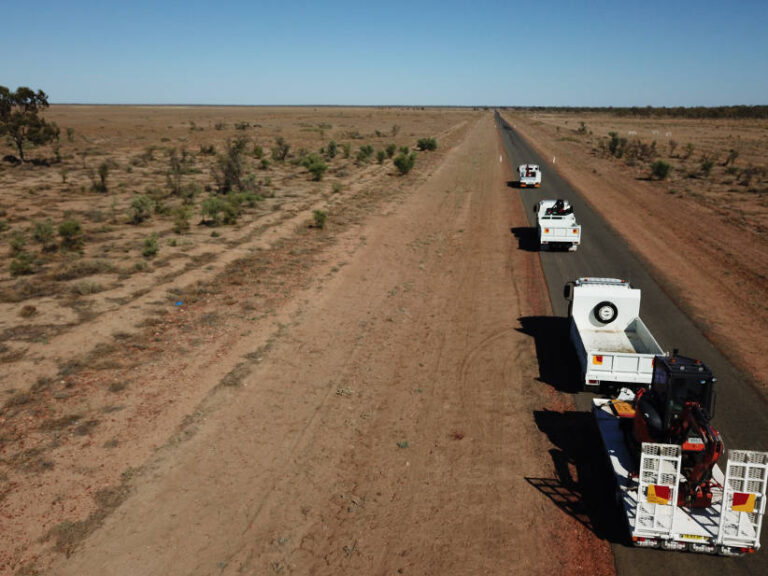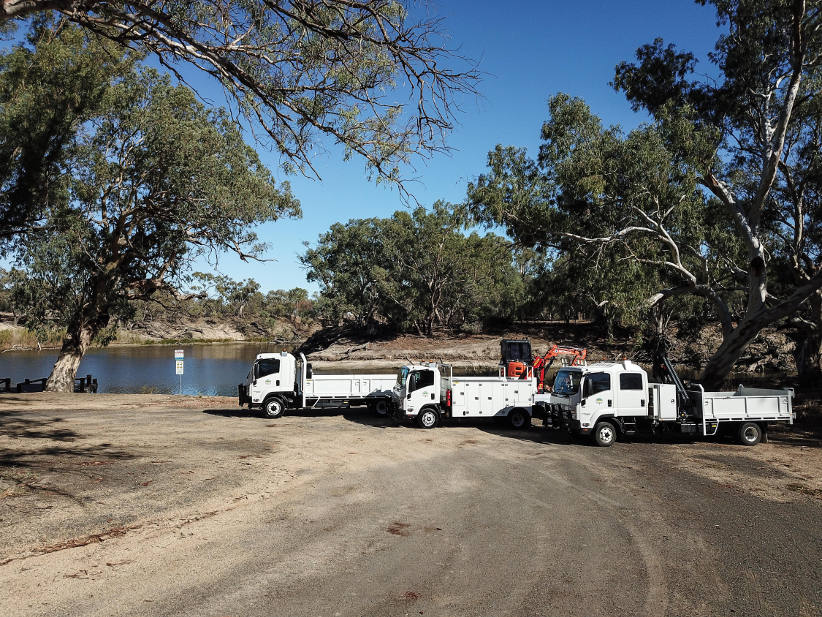Whether it’s a rural township or the urban sprawl, local councils form the bedrock of sustainable communities. From public health, planning and development to community services and maintenance, our local councils are responsible for performing critical functions to ensure community welfare.
For regional and remote communities, the role of the local council is accentuated, with their functions performing a significant role in the day-to-day happenings of a small town.
Nowhere is this more heightened than in a place like Brewarrina, a tiny outback town in the far northwest of New South Wales, on the banks of the Darling River.
Established in 1863, the Brewarrina Shire Council (BSC) is a governing entity with an elected council and mayor, and is responsible for looking after public facilities and providing a range of community services in ‘Bre’, as the town is affectionately known, while also servicing the remote villages of Gongolgon, Angledool and Goodooga.
Other duties for BSC include strategic town planning, construction and maintenance of local and regional infrastructure, food and public health services, waste management, recycling and local park maintenance.
As with any local council, a large chunk of BSC’s work involves the maintenance of infrastructure and public assets, which are varying in nature.
This work is critical in Brewarrina for a number of reasons, chief among them being the fact that the town is home to the world’s oldest human construction, the Baiame’s Ngunnhu (or known as the Brewarrina fish traps) in the Darling River. The Aboriginal-built fish traps are believed to be up to 50,000 years old and are the small town’s major tourism drawcard.
Maintaining one of the world’s most significant sites and other civil infrastructure in a harsh environment like Brewarrina’s calls for sturdy and ultra-reliable transport.
BSC’s Transport Manager, Amer Tawfik, explains the vital role Isuzu trucks play in the council’s overall management of public infrastructure.
“We respond to all types of maintenance activities from water mains breakdowns to fixing potholes on the road, and also ‘renewal’, which is basically replacing old assets with new ones, like in the case of replacing water mains and sewer mains. We do it all,” he said.
“Because a huge part of our operation involves construction and maintenance of public assets, our trucks are indispensable to our line of work.”
BSC’s strong fleet presence of over 50 vehicles, ranging from small lawnmower floats to tippers and prime movers, reflects the diversity of their operations.
Their fleet was recently boosted with the addition of three new Isuzu trucks, an FSR 140-260 tipper, an FRR 110-260 crew tipper, and an NPR 75-190 single cab service truck.
“The FSR 140-260 tipper is our ‘workshop’ truck that contains all the toolboxes, compressors and welders, and helps us to undertake all the maintenance,” Amer explained.
“We have an Isuzu FRR 110-260 crew tipper with a crane and a winch, which also has toolboxes for our maintenance activities such as road maintenance or a breakdown in a water main, for example.
“Lastly, our Isuzu NPR 75-190 is a single cab service truck with a crane, and we use it to tow a float and a small plant behind it for construction activities.”
Amer explains that the trucks joined their fleet in December 2018 after a rigorous selection process.
“We researched various brands and opted for Isuzu in the end. Our research showed us that with some other truck brands, there were many maintenance issues and breakdown concerns, but Isuzu offered very reliable trucks that consistently delivered.
“We need sturdy machines able to respond without any hiccups, both on unsealed as well as sealed roads.
“We’re glad we chose Isuzu, and based on our experience with them in the last few months, they are extremely hardy trucks.”
The three Isuzu trucks have been kitted out with extensive storage for a diverse range of gear, as per the BSC’s unique requirements.
The FRR 110-260 and NPR 75-190 are both fitted with cranes, deep wells and submersible pumps. The crane on the FRR 110-260 also has a winch that can drop cables to lift the submersible pump from wells and service them accordingly. Amer explains that the winch has added to the ease of their operations.
“Prior to the addition of the winch, we had to put a chain to hook up the pump and lift it with the crane, which was difficult. But the addition of the winch has made the operation a lot easier,” he explained.
Beyond the operational upsides, Amer explains that being in the driver’s seat of the new Isuzu trucks has been a fantastic experience for the drivers.
“Bre is about eight hours from Sydney and four from Dubbo, so previously when we used to have breakdowns, we had to wait for a specific part to arrive before the vehicle was fixed.
“This caused us a lot of downtime. But since upgrading to Isuzu, we don’t ever worry about downtime, because these trucks have been extremely reliable.
“The drivers favour the Isuzus and love the comfort these trucks provide them, especially during long days of assignments.
“These trucks clock about 20 to 30 hours of travel every week, and the drivers are very happy to do the distance and the hours because of the comfort these trucks offer. With our previous trucks, a lack of comfort was a major problem for the drivers,” Amer said.
Overall, Amer says the vehicles, apart from being invaluable to their operations, have become the choice of trucks for drivers at the council.
“The drivers are so happy to drive them that we’ve had a new problem of these trucks being booked out all the time. They are always on the road, so if someone wants them, they have to book in advance!”








